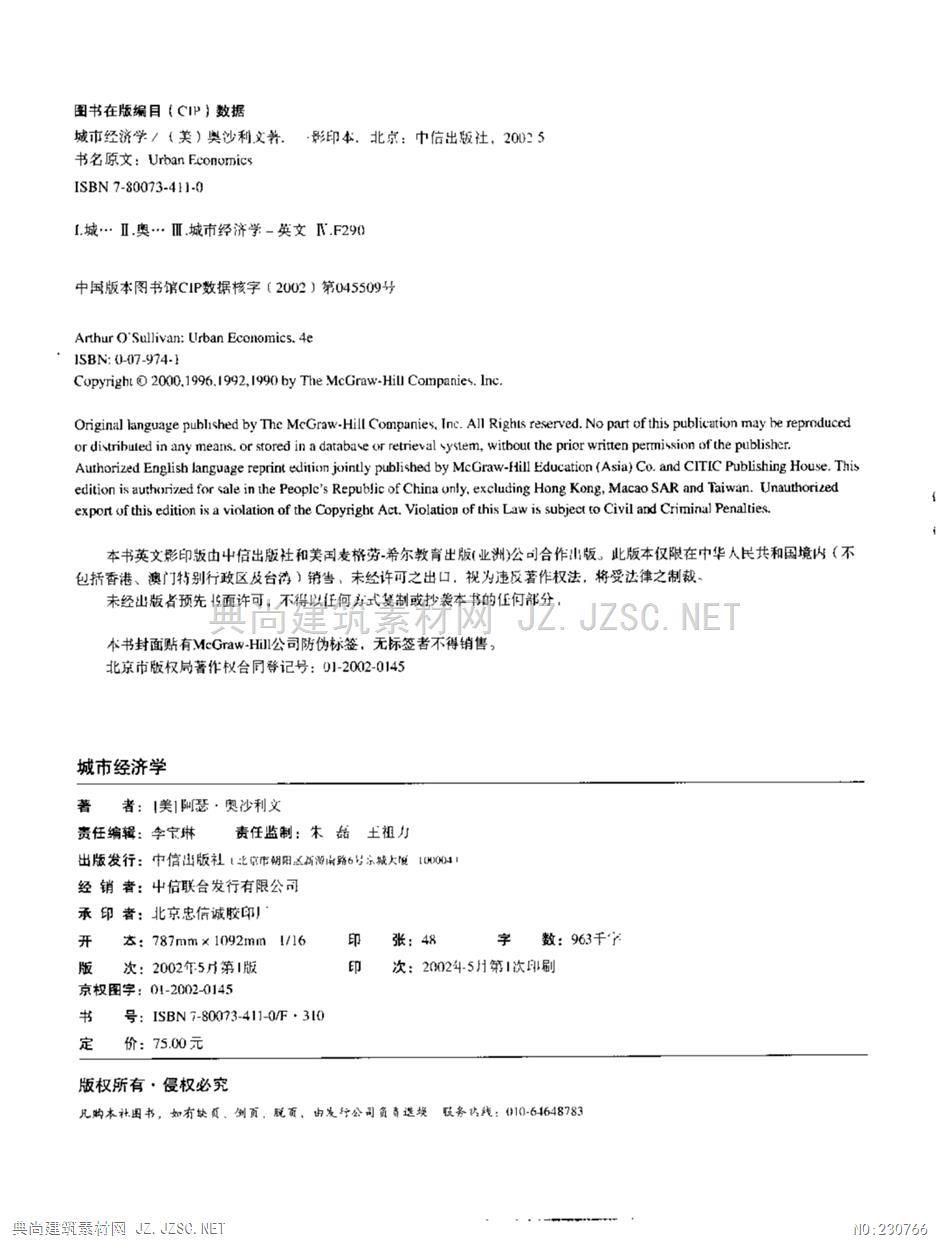









REFACEhis book uses economic analysis to explain why cities exist,where theydevelop,how they grow,and how different activities are arranged withincities.It also explores the economics of urban problems such as poverty,inadequatehousing,segregation,congestion,pollution,and crime.The text is designed for use in undergraduate courses in urban economics and urbanaffairs.It could also be used for graduate courses in urban planning,public pol-icy,and public administration.All of the economic concepts used in the book arecovered in the typical intermediate microeconomics course,so students who havecompleted such a course will be able to move through the book at a rapid pace.Forstudents whose exposure to microeconomics is limited to an introductory course-orwho could benefit from a review of the concepts covered in an intermediate microe-conomics course-I have provided an Appendix (Tools of Microeconomics)thatcovers the essential concepts.The book covers more topics than the typical urban economics text,giving instructorsseveral options for a one-semester course in urban economics.A course that en-phasizes interurhan location analysis would cover all five chapters in Part I (MarketForces in the Development of Cities),while other courses might omit some of thesechapters.A course emphasizing intraurban location analysis would cover all fivechapters in Part II (Land Rent and Urban Land-Use Patterns),while other coursesmight omit Chapter 9(General Equilibrium Land Use)or Chapter 11 (Land UseControls and Zoning).A course emphasizing urban problems would cover all fourchapters in Part II(Poverty and Housing)and most of the chapters in Part V(Ur-ban Transportation)and Part VI(Education and Crime).The three chapters on localgovernment(in Part IV)could be omitted in a course emphasizing traditional urbanproblems,but would be an integral part of a course emphasizing urban public finance.What's New in the Fourth Edition?There are many changes in the book for the Fourth Edition.The tables and chartshave been thoroughly updated with the most recent data.Throughout the book,I'vevii筑Z.Z0 viiiPrefaceadded insights and facts from recent theorctical and einpirical research.The policyanalysis has been updated to reflect recent changes in public policy and refinementsin the economic analysis of policy alternatives.There are a couple of organizational changes.The material on poverty and publicpolicy has been thoroughly rewritten,with one chapter on the effects of racial seg-regation in housing on poverty in the central city.A second chapter explores someother reasons for poverty and discusses antipoverty policies,including the recentoverhaul of the welfare system,which requires most welfare recipients to work inexchange for time-limited assistance.The second poverty chapter also has a newsection that explores the reasons for homelessness.I also regrouped the chapters inthe old Parts III and IV into four parts:Part III:Poverty and HousingPart IV:Local GovernmentPart V:Urhan TransportationPart VI:Education and CrimeHere are some highlights of the most important changes in the book,organized hythe six parts of the book.Part I:Market Forces in the Development of CitiesIncorporates many insights from the new field,"Economic Geography"Ineindes a formal model of labor-market pooling as an agglomerativeeconomy (Chapter 2)Evaluates the prediction that innovations in telecommunications will causecities to disappear as workers disperse to work i"electronic cottages"in ruralareas (Chapter 2)Explores the effects of localization economies on the location patters of firmsand the spatial concentration of industries(Chapter 3).Includes two new case studies of firms'location decisions:Japaneseautomobile firms,and the Mexican garment industry (Chapter 3)。Explores the forces responsible for the development of large primary cities indeveloping countries,including trade,trade restrictions,infrastructureinvestment,and politics (Chapter 5)Incorporates agglomerative economies into the model of labor demand andsupply (Chapter 6)Part I:Land Rent and Urban Land-Use PatternsExplores the effects of Pittsburgh's graded property-tax policy (under whichland is taxed at a higher rate than structures)on urban development(Chapter 7)Contrasts the pattern of income segregation in the United States with thepattern in other countries and explores the effects of cultural amenities on thelocatiou choices of high-income households (Chapter 8)理缆Z.Z0
本站所有资源由用户上传,仅供学习和交流之用;未经授权,禁止商用,否则产生的一切后果将由您自己承担!素材版权归原作者所有,如有侵权请立即与我们联系,我们将及时删除